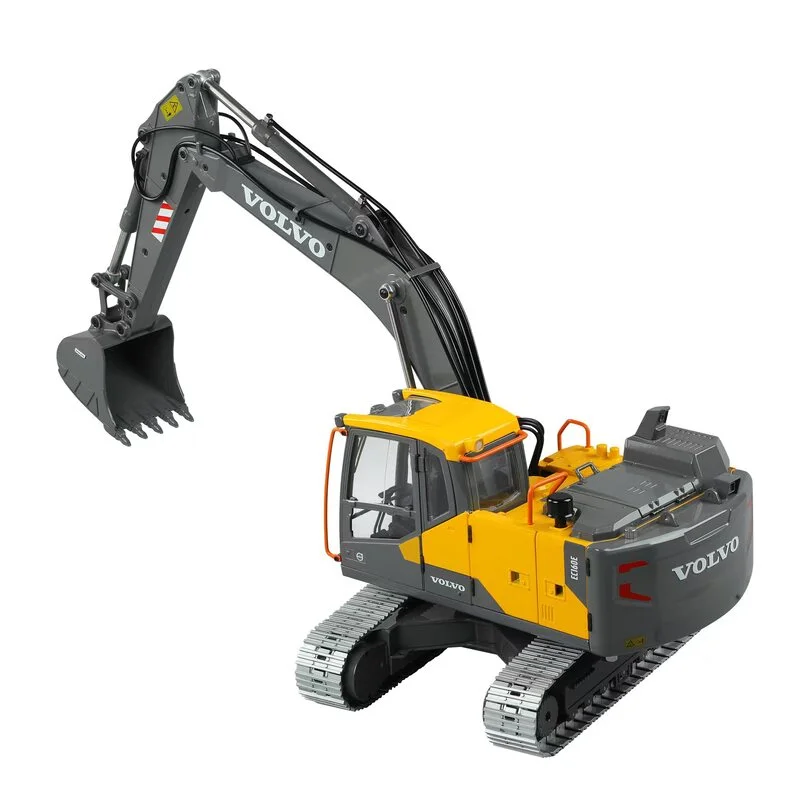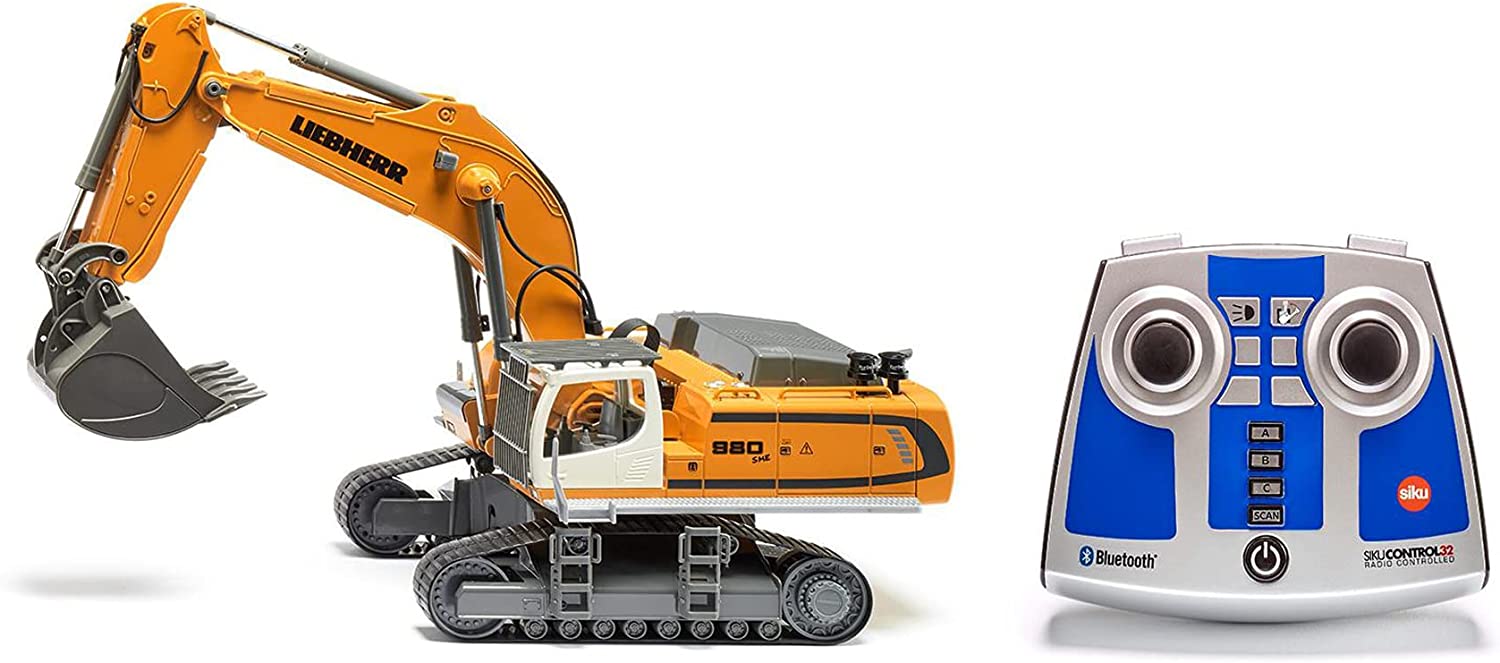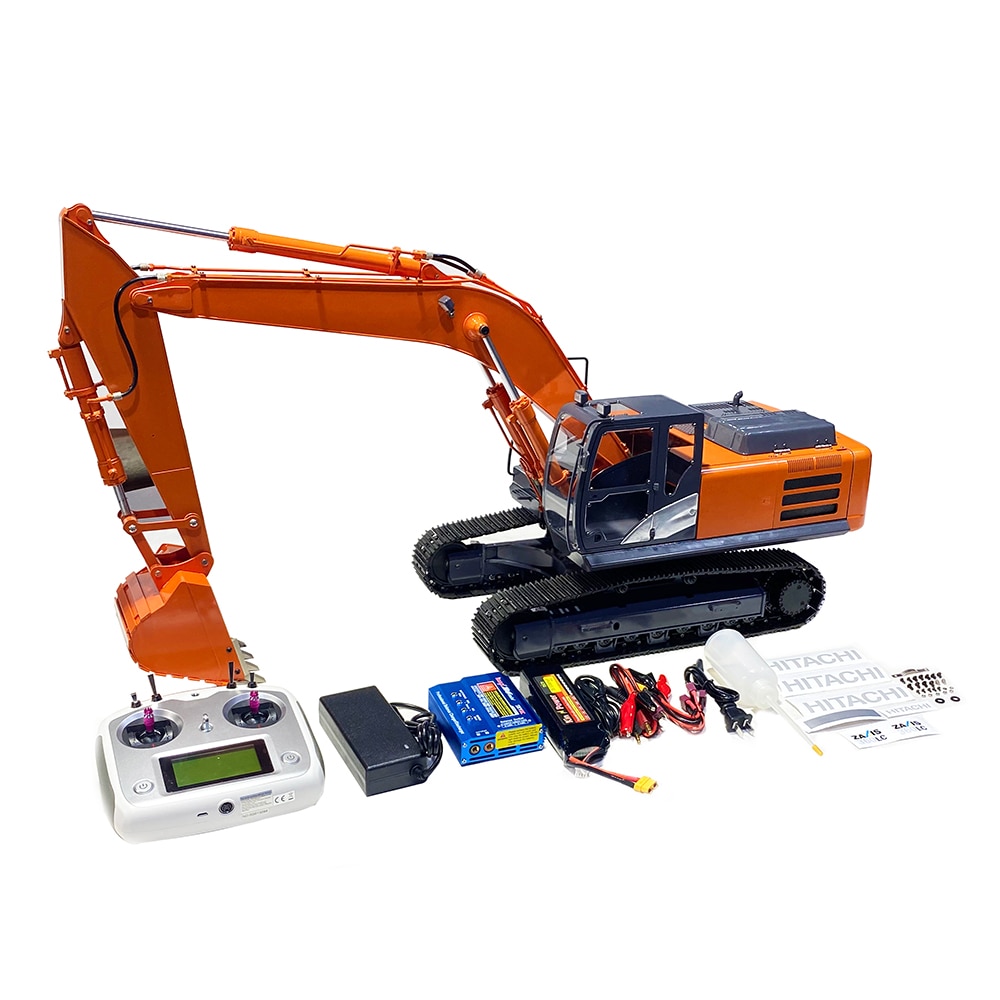The Essential Features of Excavator That Keep It a Must-Have Tool
Excavators are vital in the construction and landscaping industries. Their versatile accessories enable a series of jobs, from excavating to demolition. Furthermore, they flaunt premium digging depth and reach, powered by robust engines. Driver comfort and small layouts enhance use in various environments. Nonetheless, what truly sets excavators apart are their sophisticated hydraulic systems and toughness. Understanding these attributes can clear up why they are considered crucial tools on any type of job website.
Versatile Attachments for Enhanced Performance
Although excavators are effective makers on their own, the addition of functional add-ons greatly enhances their performance. These add-ons change a typical excavator right into a multi-purpose device, ideal for a selection of jobs. Containers, for instance, come in various sizes and shapes, making it possible for drivers to dig, scoop, and relocate products efficiently. Hydraulic thumbs can be included for enhanced gripping and handling of bulky items, such as logs or rocks.Furthermore, specialized attachments like breakers and augers enable drilling and demolition job, broadening the excavator's utility on construction sites. remote control excavator. Grapples are another choice, perfect for moving and arranging particles. This flexibility not just raises performance but also reduces the requirement for numerous machines, conserving time and expenses. By gearing up excavators with the appropriate add-ons, drivers can deal with varied tasks, making them vital in the construction industry
Superior Digging Depth and Get To
Excavators are created with superior digging deepness and reach, allowing them to maneuver in tight rooms and access hard-to-reach locations. This capability is important for various building and construction and excavation projects, where standard equipment might fall brief. With adjustable boom arms and extendable tracks, excavators can quickly browse uneven terrain while keeping stability.The excavating deepness can vary considerably among designs, often varying from 10 to 25 feet, relying on the style and purpose. This attribute makes it possible for drivers to dig deep into foundations, trenches, and various other deep structures efficiently. Furthermore, the reach of an excavator permits for specific digging and product handling without rearranging the equipment often, conserving time and labor costs.Ultimately, the remarkable excavating depth and reach of excavators make them important for specialists seeking to finish complex jobs with accuracy and effectiveness. Their versatility boosts efficiency on job sites, showcasing them as a crucial tool in modern-day building.
Powerful Engine Efficiency

Powerful engine efficiency plays a crucial function in the abilities of an excavator when it comes to performance and performance on building websites. A durable engine creates substantial horse power, enabling the machine to deal with sturdy jobs effortlessly - remote control excavator. This strength converts right into faster cycle times, enabling operators to full tasks extra quickly.Additionally, powerful engines supply the essential torque to take care of tough surfaces and differed tons, guaranteeing that the excavator can execute efficiently under various conditions. Whether it is lifting, digging, or moving materials, the engine's efficiency straight impacts the total operational performance of the machine.Furthermore, improvements in engine modern technology have actually brought about enhanced fuel effectiveness, lowering functional expenses while keeping power result. Ultimately, the engine's efficiency acts as the backbone of an excavator, verifying its standing as a crucial device in the building and construction market
Advanced Hydraulic Solutions

Improved Raising Ability
A considerable enhancement in raising ability can be connected to sophisticated hydraulic systems discovered in modern-day excavators. These systems make use of high-pressure liquid to produce greater force, enabling operators to raise much heavier tons with simplicity. The design behind these hydraulics warranties peak performance, providing an impressive power-to-weight ratio that boosts total efficiency. Because of this, excavators can take on requiring tasks, such as lifting large products or tools, without compromising stability. Furthermore, the robust style of hydraulic elements adds to raised toughness and dependability, making them ideal for numerous building environments. This improved lifting capacity not only minimizes the time needed for jobs but also minimizes the need for added machinery, showing crucial for both productivity and cost-effectiveness in the building and construction market.
Enhanced Precision Control
Although conventional excavators commonly fought with accuracy, modern hydraulic systems have changed control mechanisms, making it possible for operators to perform jobs with remarkable precision. These innovative systems utilize symmetrical control valves that allow for smoother and much more receptive movements, significantly minimizing the margin for error. Operators can currently finely tune the excavator's activities, making it simpler to navigate tight spaces and deal with delicate materials. Improved responses systems further notify operators of real-time performance, guaranteeing suitable control in between the machine and operator. This boosted precision not only enhances effectiveness but likewise improves safety on work websites, lessening the danger of mishaps. Because of this, modern-day excavators furnished with sophisticated hydraulic systems are vital devices for building and construction and click this excavation tasks needing meticulous precision.
Operator Comfort and Visibility
Operator convenience and exposure are vital parts in the design of contemporary excavators (remote control excavator). Features such as ergonomic seat style, boosted visibility alternatives, and reliable control formats significantly enhance the operator's experience and productivity. Prioritizing these elements guarantees that operators can function effectively and safely in various conditions
Ergonomic Seat Layout
Comfort and exposure are paramount in excavator layout, with the ergonomic seat playing an essential role in improving the operator's experience. An ergonomic seat is crafted to sustain the driver's body, minimizing tiredness during lengthy hours of operation. Adjustable functions, such as seat height, backrest angle, and lumbar support, provide to individual choices and promote ideal stance. These modifications enhance comfort and make it possible for the driver to keep concentrate on jobs without discomfort. Additionally, a properly designed seat can offer better side assistance, enabling for smoother maneuvering when the excavator is in procedure. This thoughtful layout not only improves performance but additionally adds to total safety and security, guaranteeing that drivers can perform their obligations efficiently and efficiently.
Boosted Visibility Functions
The design of an excavator expands past simply the seat, with enhanced exposure attributes playing a considerable function in operator convenience and overall safety. Huge home windows and strategically positioned mirrors offer drivers with a clear view of their environments, lessening unseen areas. This style factor to consider permits far better spatial understanding, which is important in active workplace. Additionally, many excavators include rearview electronic cameras and progressed tracking systems that assist drivers in maneuvering limited rooms. The assimilation of these visibility features not only advertises safety and security but also decreases driver tiredness by allowing much easier monitoring of workspace. Eventually, enhanced visibility adds to much more reliable procedures and aids these details assure that excavators can execute their jobs properly and securely.
Control Layout Effectiveness
While maneuvering complex work sites, an effective control design substantially enhances both operator convenience and exposure. A well-designed control arrangement warranties that drivers can access essential functions with very little effort, lowering tiredness throughout long hours. Ergonomic joystick positionings and user-friendly switch setups permit for seamless procedure, making it possible for drivers to maintain concentrate on the job available. Additionally, clear presence of both the workplace and the control board is crucial for safety and security and precision. Modern excavators commonly integrate adjustable seats and control settings to fit various driver preferences, better improving comfort. Eventually, an attentively developed control design not only enhances performance but likewise promotes a more secure working environment by allowing operators to respond quickly to changing conditions.
Compact Style for Urban Environments
As urban construction sites frequently encounter space constraints, a portable design comes to be important for excavators operating in these settings. These makers are crafted to navigate limited rooms, permitting for efficient maneuverability in crowded task websites. A minimized impact enables them to work closely to existing structures, minimizing disturbance and making the most of productivity.The small style typically includes shorter tracks and a tighter turning radius, helping with operation in narrow streets and constrained locations. Moreover, light-weight products contribute to alleviate of transport, making it less complex to move the excavator from one location to one more within the urban landscape.Additionally, numerous small excavators are furnished with functions such as functional accessories and extendable arms, boosting their performance while keeping a small size. This flexibility enables drivers to take on a range of tasks, from excavating to demolition, all while fitting perfectly into the restrictions of urban settings.

Longevity and Maintenance Considerations
Longevity stands as a crucial variable in the performance and longevity of excavators, specifically sought after urban environments. These machines are subjected to strenuous problems, consisting of differing soil types, severe temperatures, and high-frequency usage. Top quality materials and durable building and construction are essential for making sure that excavators can stand up to these difficulties without compromising functionality.Regular upkeep is similarly essential in preserving toughness. Scheduled examinations, timely oil adjustments, and the replacement of worn components add considerably to an excavator's life expectancy. Operators needs to likewise take notice of hydraulic systems, tracks, and undercarriages, as these components frequently bear the force of wear and tear.Investing in long lasting excavators with extensive maintenance plans improves reliability and reduces downtime, inevitably bring about boosted productivity on building websites. Recognizing the interplay between durability and maintenance is crucial for anybody thinking about the acquisition of an excavator for metropolitan projects.
Frequently Asked Concerns
How Do Excavators Compare to Other Building And Construction Equipment?
Excavators stand out amongst building tools as a result of their versatility, allowing jobs such as grading, lifting, and digging. Contrasted to others, their hydraulic abilities use higher effectiveness and power, making them crucial on numerous job websites.
What Safety And Security Includes Are Consisted Of in Modern Excavators?
Modern excavators incorporate various safety and security features, including rollover protection systems, alarms, and advanced visibility enhancements. These elements interact to decrease threats, making certain driver security while improving performance on building sites and various other requiring environments.

Can Excavators Be Utilized in Winter Issues?
Excavators can indeed be used in winter season conditions, offered they are outfitted with ideal winter months attachments and precautions are taken. Proper maintenance and adjustments enhance their performance, ensuring reliable operation despite difficult climate situations.
What Is the Average Lifespan of an Excavator?
The average lifespan of an excavator generally varies from 7,000 to 10,000 hours of operation. This period can greatly depend on upkeep practices, operating conditions, and the certain version's resilience and style attributes.
How Do I Select the Right Excavator Dimension for My Project?
Choosing the appropriate excavator size involves assessing job extent, site conditions, and product types. Consider variables like reach, deepness requirements, and weight description capability to guarantee maximum performance and safety during procedure. Size issues significantly in task success. Furthermore, the reach of an excavator enables for specific excavating and material handling without rearranging the device frequently, saving time and labor costs.Ultimately, the premium excavating deepness and reach of excavators make them important for experts looking for to complete complicated tasks with precision and effectiveness. Convenience and presence are extremely important in excavator style, with the ergonomic seat playing a crucial duty in enhancing the driver's experience. The style of an excavator extends beyond just the seat, with improved presence features playing a significant role in operator comfort and overall safety and security. Modern excavators frequently integrate flexible seating and control setups to fit numerous driver choices, additionally enhancing convenience. Light-weight materials contribute to relieve of transport, making it simpler to relocate the excavator from one place to an additional within the urban landscape.Additionally, many small excavators are equipped with functions such as versatile add-ons and extendable arms, boosting their functionality while maintaining a tiny dimension.